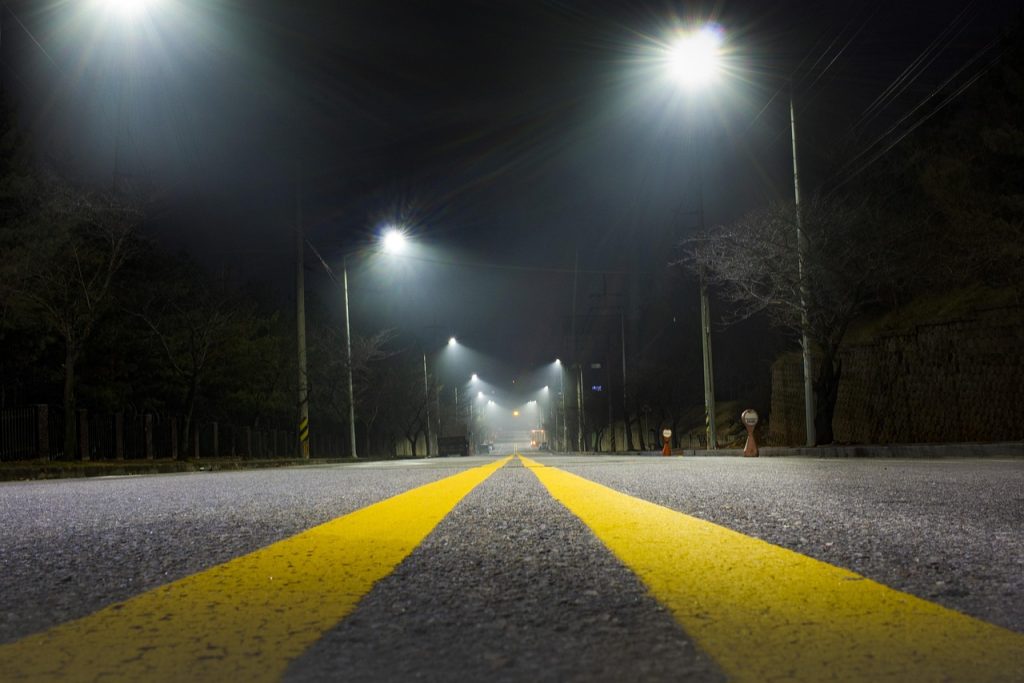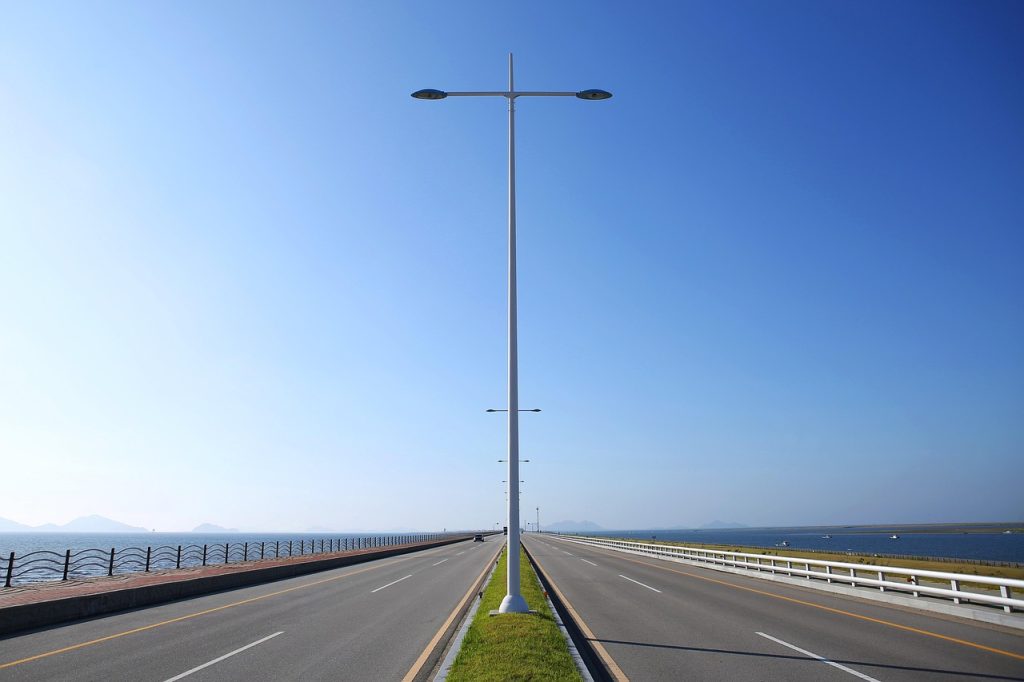Intelligent Street Lamp Lighting Solutions
Intelligent Street Lamp Lighting Solutions
Comprehensive Solution for Smart Street Lamps – Smart Street Lighting in Urban Roads Is on the Horizon
Smart lighting is an important component of smart cities. It utilizes urban sensors, power line carrier/ZIGBEE communication technology, and wireless GPRS/CDMA communication technology to connect street lamps in the city, forming an Internet of Things, and achieving remote centralized control and management of street lamps. It has functions such as automatically adjusting brightness based on traffic volume, time, weather conditions, etc., remote lighting control, active fault alarm, anti-theft of lamp cables, and remote meter reading. Smart street lamps can effectively control energy consumption, significantly save power resources, improve the management level of public lighting, reduce maintenance and management costs, and utilize information processing technologies such as computing to process and analyze massive perception information, making intelligent responses and providing intelligent decision support for various needs including people’s livelihood, environment, and public safety, thus bringing urban road lighting to a smart state.
1. Smart Street Lighting in Urban Roads
Urban road lighting is an important component of urban public facilities. With the advancement of urbanization, the number of street lamps in urban roads is increasing, energy consumption is rising, and power supply is becoming tight. In addition, the maintenance work and high maintenance costs of urban lighting (such as manual control and street lamp inspection) have caused significant difficulties for urban management. Management departments need more efficient management and energy-saving solutions to promote the scientific management and green energy conservation of urban lighting.
2. Comparison and Benefit Analysis of Smart Lighting Technologies
Power Line Carrier and ZigBee Communication
In the field of smart street lamp control in cities, the GPRS + ZigBee and GPRS + power line carrier communication methods are two mainstream technologies. Among them, GPRS technology is suitable for long-distance transmission, while ZigBee and power line carrier technologies are suitable for short-distance networking applications. If these two technologies are combined, their respective advantages can be fully utilized. GPRS
Technology is responsible for the data transmission over long distances (between the monitoring center and the site), while ZigBEE and power line carrier technology are responsible for data collection within the subnets (from the central controller to the single lamp controller). This networking method is very suitable for occasions where the collection points are scattered, the collection environment is harsh, and the requirements for real-time performance and reliability are relatively high. In the urban smart lighting system, since the amount of data transmitted is not large, ZigBee, power line carrier technology, etc. are all applied to the control and management of street lamps. Power line carrier technology transmits data through power lines, which is convenient and fast, but the transmission distance is short, the signal loss is large, and the pulse interference is serious; while ZigBee technology has the advantages of low cost, low power consumption, and flexible networking, but its adaptability and stability in dynamic environments are slightly worse.
3. Solutions and Product Introduction

With the increasing promotion of smart cities, energy-saving LED lamps are more suitable for replacing high-power sodium lamps, which can not only save a considerable amount of electricity, but also reduce the pressure on the environment. With the advancement of urban development, smart cities are constantly improving, and the demand for urban WIFI hotspots, urban small and micro base station sites, urban road video surveillance, and urban sensor layers (PM2.5 monitoring, traffic flow monitoring, etc.) is increasing, which also promotes the diversified application system of smart lamp poles. By fully integrating the existing street lamp resources in urban roads and using street lamps as carriers to build smart cities, it will become a major trend in the future, and at the same time, it will also make reasonable use of public resources on municipal roads and prevent the waste of duplicate resources.
3.1 Product Introduction
Smart street lamps are smart street lamp products that integrate various information equipment technology innovations and composite applications. They have multiple functions such as smart lighting, WIFI hotspots, environmental information collection, security and road smart monitoring, information release, emergency visual alarm, and intelligent charging for electric vehicles. The product adopts a modular structure design, and customers can choose different functional modules according to different needs and application scenarios to provide better services and infrastructure for the owners and their end users.
3.2 Product Function and Specification Description
The smart street lamp system consists of seven application subsystems: LED street lamp monitoring subsystem, network multimedia information release subsystem, wireless WLAN subsystem, smart monitoring subsystem, environmental sensor monitoring subsystem, charging pile subsystem, and video and voice assistance subsystem. Each application subsystem can operate in combination according to actual needs, and users can also select different application subsystems for combined application based on actual situations.
3.2.1 LED Smart Street Lamp Subsystem
The LED lamp adopts a high-pressure die-cast formed shell and is treated with external electrostatic spraying. It uses materials with high thermal conductivity and aluminum alloy for heat dissipation. The lamp angle has a regulator and is marked with a scale for adjustment, allowing for 45-degree up and down adjustment. It has a modular design and standard installation interfaces for quick maintenance and repair. It can be remotely switched on and off, dimmed, and the power consumption data and lamp status can be queried through the terminal controller. Customers can choose lamps according to their different needs.
3.2.2 Network Multimedia Information Release Subsystem
The full-color display screen on the LED lamp pole serves as a platform for network multimedia information release. It is embedded with LAN, WIFI, and 3G intelligent management core modules, allowing for flexible control of advertisements, easy replacement of advertisement graphics and text information, and display of information such as commercial advertisements, public welfare publicity, public information release, emergency warnings, regional map display, and surrounding environmental air pollution conditions.
3.2.3 Wireless WLAN Subsystem
The smart street lamp integrates a wireless access point (AP) as the access point of the WLAN network, with a coverage radius of 150 meters (signal strength reaching -65dbm). The WIFI coverage adopts a high-power dual-band wireless access point coverage mode, supporting the latest generation 802.11ac protocol outdoor dual-band wireless AP (Access Point), supporting 33MIMO, supporting 2.4GHz and 5GHz frequencies, supporting wireless bridges, and compatible with IEEE802.11a/b/g/n/ac standards. Dual-band simultaneously provides services, providing higher access capacity, with complete service support capabilities, complete user access control capabilities, high-level network security, flexible networking and environmental adaptability, simple equipment management and maintenance, high reliability and protection level, etc., meeting the requirements of outdoor installation-type network deployment.
Authentication/encryption methods, MAC access control, WEP encryption and other security mechanisms ensure the security of data on public networks. Unique lightning protection design and meeting the requirements for surge protection of communication equipment in TEC61000-4-5, it can work in outdoor harsh environments. It has high throughput and strong load capacity, using high-performance processors and wireless radio frequency control technology to ensure stable signal strength and signal quality output, supporting automatic power adjustment, automatic frequency adjustment, load balancing and other functions, making large-scale wireless networking more flexible.
3.2.4 Smart Monitoring Subsystem
The smart street lamp integrates cameras, which serve as the front-end smart units of the smart monitoring system. They adopt 3-megapixel infrared network high-definition dome cameras supporting the H.265 efficient compression algorithm, and simultaneously support 10 types of behavior analysis and 4 types of anomaly detection. They have a pan-tilt function and can be set to collect 360-degree images at regular intervals. While meeting the video monitoring requirements of full coverage of road sections and 24/7 high-definition recording for conventional road monitoring systems, the smart monitoring system introduces multiple industry-leading video intelligent technologies such as full-screen video detection, video tracking, and license plate recognition. At the same time, it can be linked with emergency visual alarm devices to monitor specific areas.
3.2.5 Environmental Sensing Monitoring Subsystem
The environmental sensors integrated in the smart street lamp can monitor environmental sensing information such as PM2.5, temperature, humidity, atmospheric pressure, wind speed, wind direction, rainfall, and noise in real time. After analyzing and processing the collected data, it is released in real time through the city’s release platform (LED display release and WIFI hotspot prompts), facilitating citizens’ travel, and providing basic meteorological data for the meteorological bureau and pollution analysis data for the environmental protection bureau.
3.2.6 Charging Pile Subsystem
The smart street lamp integrates an AC charging pile for electric vehicles, which can provide AC power for electric vehicles equipped with on-board chargers. The operation is simple, and during the charging process, it can display charging mode, time, power, and cost information in real time.
3.2.7 Video and Voice Assistance Subsystem
The smart street lamp integrates alarm assistance equipment, which can enable the monitoring center to broadcast to the outside and outdoor extensions to call the monitoring center. The external broadcast can release emergency information, notifications, government affairs, news, etc. The outdoor extension calling the monitoring center can achieve emergency calls. When citizens encounter emergencies and need assistance, pressing the one-key emergency button will immediately pop up the alarm information on the 110 command center’s platform in the jurisdiction, enabling rapid response, networked assistance, and nearby dispatch. The city’s one-key emergency alarm system can effectively combat criminals and plays a very important role in maintaining urban public security. It can greatly enhance the efficiency of handling emergencies, improve the government’s administrative efficiency, and establish a high public image. This system aims to establish a comprehensive voice assistance network within the city to ensure the safety of every corner of the city and prevent all potential safety hazards.

LED municipal street lamps represent an important direction in the development of smart lighting technology. Replacing traditional municipal street lamps, such as high-pressure sodium lamps, with LED street lamps can save at least 50% of electricity while ensuring the quality of road lighting. Therefore, the wide promotion of this equipment will directly save a large amount of power energy.
By installing integrated street lamp and charging station equipment at the locations of municipal street lamps, it is possible to build integrated electric vehicle charging facilities without occupying additional land resources. This approach has significant advantages over traditional charging stations and charging piles. In line with the development needs of cities, the signal coverage of urban micro base stations is limited, which directly affects people’s daily communication. By using street lamp poles as carriers and installing micro base stations, it is more conducive to base station coverage and also solves the problem of high human and material costs for signal installation for telecommunications operators. At the same time, installing WIFI signal hotspots on street lamp poles makes people’s daily travel more convenient and indirectly provides wireless signals for video security transmission for municipal road management departments. This not only saves the cost of installing expensive optical fiber cables but also provides high-speed networks more conveniently, allowing for real-time analysis of road safety and congestion situations. With the increasing severity of environmental pollution, installing environmental monitoring devices on street lamp poles is more conducive to people’s attention to the urban living environment and enhancing their environmental awareness.







